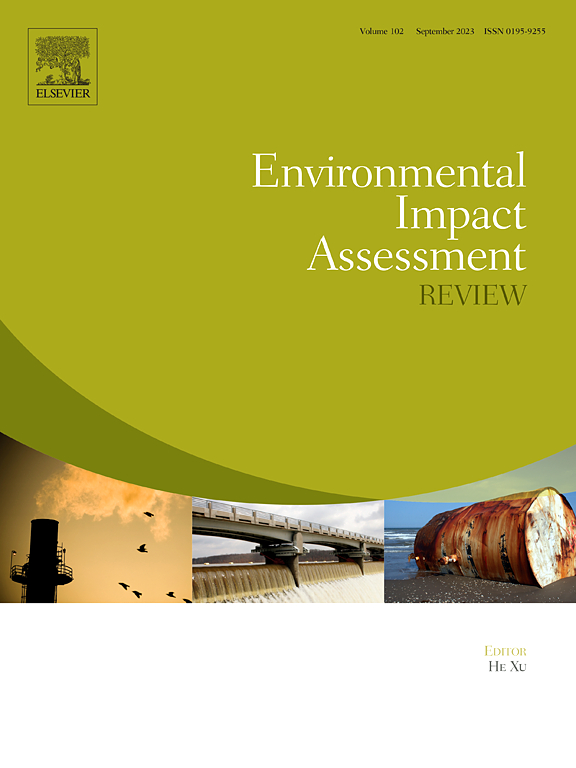The integration of multi-agent system and multicriteria analysis for developing participatory planning alternatives in urban contexts
IF 9.8
1区 社会学
Q1 ENVIRONMENTAL STUDIES
引用次数: 0
Abstract
Decision-making problems, particularly in transformation and planning processes, often involve multiple conflicting objectives/criteria that should be considered. However, it is possible to distinguish between two different types of problems. In the first type, a predefined and discrete set of alternatives has to be evaluated. In the second type, conversely, the set of suitable solutions is not explicated in advance but requires constraint functions for its definition. Alternative generation for choice problems is a vital activity in decision analysis that is sometimes overlooked and underdeveloped. Within this context, the present contribution proposes an integrated approach for supporting a participatory process of scenario planning. This approach combines three interrelated steps. Firstly, data pertaining to the context are collected using SWOT and Stakeholder Analysis. Secondly, the elicitation of preferences expressed by the main stakeholders involved in the planning process is conducted through a multicriteria method. Thirdly, a multi-agent system (MAS) supports the scenario building phase. MAS takes into account both the satisfaction of citizens' and stakeholders' preferences and the comprehensive sustainability of the site, according to a set of multi-dimensional indicators. The generation of alternative scenarios is contingent upon the consideration of preferences and sustainable performance, but also on the suitability of current and new land uses, which are based on a rich set of data elaborated through a Geographic Information System (GIS). The case study of Basse di Stura in Turin (Italy) represents a useful example to test the applicability of this integrated approach. This is due to the fact that the transformation in this area is at an impasse, due to the high pollution of the soil and the different perspectives of the stakeholders involved. The results reveal the ability of this integrated approach in facilitating the development of participatory solutions, that can take into account sustainable objectives, stakeholders' needs and the specificity of the context under analysis.
多主体系统和多标准分析在城市环境下发展参与式规划替代方案的整合
决策问题,特别是在改造和规划过程中,往往涉及应考虑的多个相互冲突的目标/标准。然而,可以区分两种不同类型的问题。在第一种类型中,必须评估一组预定义的、离散的备选方案。相反,在第二种类型中,合适解的集合没有事先说明,而是需要约束函数来定义。选择问题的替代生成是决策分析中一个重要的活动,有时被忽视和不发达。在这方面,本报告提出了一种支持参与性情景规划进程的综合办法。这种方法结合了三个相互关联的步骤。首先,使用SWOT和利益相关者分析收集与上下文相关的数据。其次,规划过程中主要利益相关者表达的偏好是通过多标准方法进行的。第三,多智能体系统(MAS)支持场景构建阶段。根据一套多维指标,MAS考虑了公民和利益相关者的偏好满意度以及场地的综合可持续性。备选方案的产生取决于对偏好和可持续表现的考虑,但也取决于当前和新的土地用途的适宜性,这是根据通过地理信息系统(GIS)拟订的一套丰富的数据。都灵(意大利)的Basse di Stura的案例研究是检验这种综合方法适用性的一个有用的例子。这是因为该地区的转型陷入了僵局,原因是土壤的严重污染以及相关利益相关者的不同观点。结果显示了这种综合方法在促进参与性解决方案的发展方面的能力,这种解决方案可以考虑到可持续目标、利益相关者的需求和所分析背景的特殊性。
本文章由计算机程序翻译,如有差异,请以英文原文为准。
求助全文
约1分钟内获得全文
求助全文
来源期刊

Environmental Impact Assessment Review
ENVIRONMENTAL STUDIES-
CiteScore
12.60
自引率
10.10%
发文量
200
审稿时长
33 days
期刊介绍:
Environmental Impact Assessment Review is an interdisciplinary journal that serves a global audience of practitioners, policymakers, and academics involved in assessing the environmental impact of policies, projects, processes, and products. The journal focuses on innovative theory and practice in environmental impact assessment (EIA). Papers are expected to present innovative ideas, be topical, and coherent. The journal emphasizes concepts, methods, techniques, approaches, and systems related to EIA theory and practice.
 求助内容:
求助内容: 应助结果提醒方式:
应助结果提醒方式:


